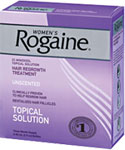Hi Dr Rassman, I have an important question for you regarding the study of hair grafts you conducted with Dr Bernstein in 2006. The study states that the Dr. Was able to tell when the growth center for the hair had been pulled out by looking at what he pulled out by eye.
My question is this:
- how do you physically identify when the growth center has been pulled out?
- Is there always blood?
- Does bloody mean that the centre has been removed for certain?
- If a hair comes out and there is a dried out “bulb” shaped skin on the end of the scalp, does that mean that the graft has been lost or the graft was a dead one?
- did this study account for partially loose scabs?
After about 4 to 5 days, some of my scabs started to loosen…i started to gently brush some of them with my fingers and some of them were loosely stuck by a strand of skin, which I pulled gently with enough force to remove the scab. My question is this-
- how can I identify when I have pulled out a growth centre and when I haven’t?
- Do you think there was a good chance that I pulled a graft out?
- Lastly, your study includes 18 gauge needles only. What is the standard size needle use or what range sized needles do you use?
Thanks so much for your time and thanks for the study!!!
Firstly, here is the article you referenced, as originally published in Dermatologic Surgery in 2006 — Graft Anchoring In Hair Transplantation — PDF file or HTML
Your email is not clearly written, but I think that you are asking about the hairs we pulled out on varying days after surgery to determine if the graft growth center was left behind. To answer that question, we asked the pathologist to identify the critical parts of the hair that determines growth (the bulge area near the sebaceous gland in particular) and this would include all parts of the hair and what is called the dermal sheath. If this was pulled out, we could safely assume the the graft would not grow. This was not done with the naked eye, but rather by the pathologist under the microscope. By having a specialist look at the grafts that were pulled out, we had an impartial expert make the judgments. I hope that this answers your questions.
With regard to your other questions, please read the article carefully, as we put it all there. Without a microscope and experience, you probably would not be able to tell the status and that is why we put the article together, to be able to guess what is really happening. When the scab is present on the surface, it is likely that the graft growth center can come out.

 Rogaine is a brand name for a topical formulation of a generic drug named minoxidil meant for topical application to the scalp (for hair growth). It comes in 5% strength for men and 2.5% strength for women and is available without a doctor’s prescription (over the counter). I’ve written about the ingredient differences before
Rogaine is a brand name for a topical formulation of a generic drug named minoxidil meant for topical application to the scalp (for hair growth). It comes in 5% strength for men and 2.5% strength for women and is available without a doctor’s prescription (over the counter). I’ve written about the ingredient differences before  Yes, you could use the “for women” version if you wanted to.
Yes, you could use the “for women” version if you wanted to.